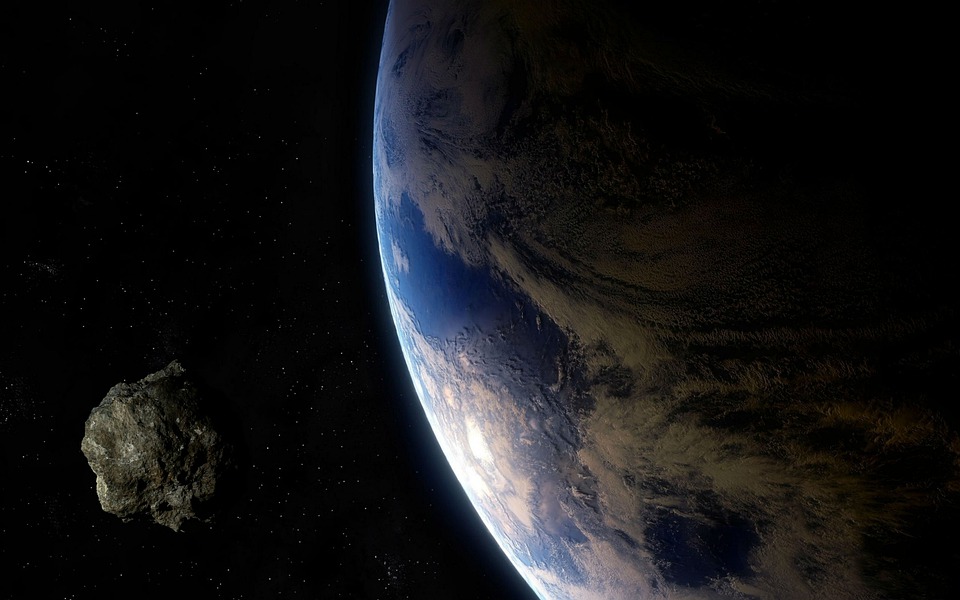Asteroids usually pass by our planet more often than we know, and NASA has confirmed that one space rock will be hurtling towards Earth. The agency confirms one asteroid will be passing by Earth today.
The asteroid that is currently traveling towards Earth is referred to as 2020 XF4 and is confirmed by NASA to pass by this week. XF4 will be making an approach to our planet on Wednesday, December 16. Classified by the agency as a Near-Earth Object, it is traveling through space at a speed of 6.81 kilometers per second or 15,234 miles per hour. As for its size, NASA has estimated XF4 to measure around 62 feet in diameter making it a fairly large asteroid. This means XF4 is around the size of a four-story building.
Thankfully the asteroid does not pose a threat to our planet and no collision is to be expected anytime soon. By the time XF4 reaches our vicinity, it will only get as close as 0.00229 astronomical units. This is equivalent to 342,577 kilometers away and although this is extremely far by our standards it is already noticeable enough for agencies to pick up. The distance of which XF4 will get close to us is around the same distance between our planet and the Moon. To note, the distance between Earth and the Moon is 384,400 kilometers.
With roughly a little more than a week left until Christmas, it has now posed a question among astronomers as to whether a certain space phenomenon may make an appearance. Neighboring planets Saturn and Jupiter however, have been confirmed to come together on Monday, December 21 in what is known as the Great Conjunction. This would be the closest the two planets have been for almost 800 years.
The conjunction of Saturn and Jupiter may even appear to us on Earth as a very bright cosmic object that resembles the Christmas star as read from the Bible. Astronomers Deborah Byrd and Bruce McClure revealed that the two planets tend to get into conjunction once every 20 years but it did not seem to be the case given their last conjunction was observed back in 1623.



 Eli Lilly’s Inluriyo Gains FDA Approval for Advanced Breast Cancer Treatment
Eli Lilly’s Inluriyo Gains FDA Approval for Advanced Breast Cancer Treatment  FDA Adds Fatal Risk Warning to J&J and Legend Biotech’s Carvykti Cancer Therapy
FDA Adds Fatal Risk Warning to J&J and Legend Biotech’s Carvykti Cancer Therapy  Senate Sets December 8 Vote on Trump’s NASA Nominee Jared Isaacman
Senate Sets December 8 Vote on Trump’s NASA Nominee Jared Isaacman  Astronomers have discovered another puzzling interstellar object − this third one is big, bright and fast
Astronomers have discovered another puzzling interstellar object − this third one is big, bright and fast  Neuralink Expands Brain Implant Trials with 12 Global Patients
Neuralink Expands Brain Implant Trials with 12 Global Patients  SpaceX Starship Explodes in Texas During Test, Citing Nitrogen Tank Failure
SpaceX Starship Explodes in Texas During Test, Citing Nitrogen Tank Failure  Blue Origin’s New Glenn Achieves Breakthrough Success With First NASA Mission
Blue Origin’s New Glenn Achieves Breakthrough Success With First NASA Mission  NASA Astronauts Wilmore and Williams Recover After Boeing Starliner Delay
NASA Astronauts Wilmore and Williams Recover After Boeing Starliner Delay  Lost in space: MethaneSat failed just as NZ was to take over mission control – here’s what we need to know now
Lost in space: MethaneSat failed just as NZ was to take over mission control – here’s what we need to know now  Lab-grown meat: you may find it icky, but it could drive forward medical research
Lab-grown meat: you may find it icky, but it could drive forward medical research  Neuren Pharmaceuticals Surges on U.S. Patent Win for Rare Disorder Drug
Neuren Pharmaceuticals Surges on U.S. Patent Win for Rare Disorder Drug  Trump Signs Executive Order to Boost AI Research in Childhood Cancer
Trump Signs Executive Order to Boost AI Research in Childhood Cancer  SpaceX’s Starship Completes 11th Test Flight, Paving Way for Moon and Mars Missions
SpaceX’s Starship Completes 11th Test Flight, Paving Way for Moon and Mars Missions 































